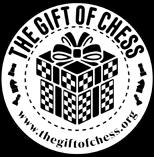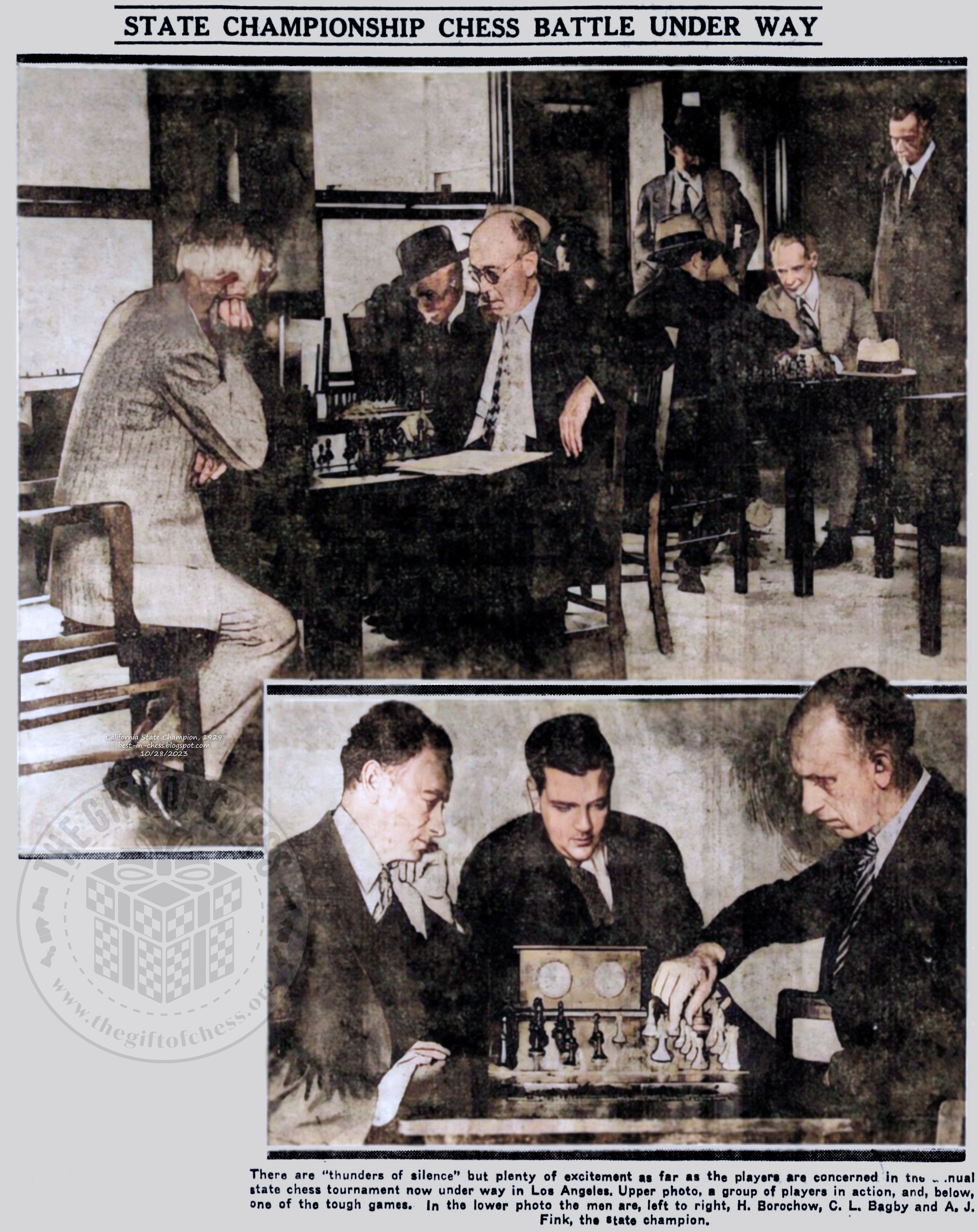Back to Home Index
August 21 1959
The San Francisco Examiner, San Francisco, California, Friday, August 21, 1959
See Pictorial Living For Chess By Master
For the chess players—
A witty article by San Francisco lawyer, Charles Bagby, chess master and champion of California, appears in Pictorial Living with Sunday's Examiner. Original b/w photography by Eugene Anthony.
In addition, Pictorial Living photographers invaded the chess and checker room of the Nation's oldest club, said Mechanics Institute.
You'll also see photographs of rare collectors' item chess sets.
Be sure to read “The Chess Men—A Piece of Mind,” in Pictorial Living Magazine with Sunday's Examiner.
August 23 1959
The San Francisco Examiner, San Francisco, California, Sunday, August 23, 1959
Charles Bagby studies the chess board, set with chessmen over a half century old, and carved from tough lignum vitae wood.
San Francisco lawyer Charles Bagby is a chess master and Champion of California as well as vice president of the Mechanics Institute whose chess club is the country's oldest.

The Chess Men-A Piece Of Mind
By Charles Bagby
Over a century ago there appeared in England chess sets of a design that bears the name of Howard Staunton, a noted player of that day. They are of graceful aspect, and especially pleasing are the hand carved knights with spirited horses' heads derived from the Parthenon frieze. These pieces, traditionally made of boxwood, when carved and polished are rich and close grained, a delight to the eye and sensuous to the hand. The Queen in Tenniel's illustration of Lewis Carroll's “Alice” is a Staunton piece.
A good Staunton set is the gold standard of the experienced chess player. Unfortunately, few good ones are being made today. As the modern manufacturer of furniture cannot refrain from adding his own embellishments to Chippendale and Sheraton, the manufacturer of chess pieces must modify the Staunton design. Little change is needed to take the grace out of it; knights are machine carved; orange or lemon wood is substituted for boxwood and soon the truth of the old saying is proved once more: “Nobody has yet made anything that some one else can not make' cheaper and poorer.”
The second traditional design is what is called the “French” set. These pieces are too tall for the width of the base and are inherently unstable. They are caught by the player's cuff at every move with consequent disaster to the position. They bear a number of inane ruffles around the neck which, in case of need, one may count in order to distinguish the bishop from the queen. Perhaps the best commentary on this design is that the French do not like it.

Collectors' sets are made of precious materials and seem to share one curious particularity they are fragile. Sets of ivory come from India, sets of jade from China and the Swedes turn out a few of carved crystal. Much subtlety goes into the oriental productions, but it is not all aimed at the enhancement of the beauty of the work; a great deal of it is directed at the souvenir collecting proclivities of the tourist. If these carvings were in fact fine art they would not pretend to a utility which is forbidden by their costliness and delicacy.
Every man who owns a lathe will sooner or later design and make a chess set. This fact should be included with the inevitabilities of death and taxes. The shapes will vary, but you may be sure that each will be highly original. Some will be conical and should come supplied with a tool with which they may be grasped when a move is to be made. Others will be squat blobs; a few are exercises in primitive geometry; many are artistic bankruptcies of the type exemplified by those modern bentwood chairs supported on off-center, spindling iron legs. Whatever the form, they will bear to a good Staunton set about the same relationship that a building contractor's portable house bears to the Palace of Fine Arts. I have seen hundreds of such sets but never one with which I was willing to play a game.
Other novelties along this line are encountered. Those who own home metal working machinery turn out aluminum sets for the antiseptically minded. I should mention also —oh woe!— that there are sets of plastic. They are usually rendered more “attractive” by coloring half the pieces red instead of black. On a recent depressing day I was much cheered by a friend who informed me that plastic pieces ignite readily, burn rapidly and leave but little ash.

The Mechanics Institute, operating the oldest chess club in the United States, possesses chessmen that have been in constant use for more than half a century. They were especially designed for vigorous service and were turned from lignum vitae, a wood so hard that it is used as bearing on the propeller shafts of ships. In spite of their toughness these pieces are chipped and scarred from the stress of many a forgotten struggle. Here in this old club on Post Street chess geniuses have pondered over them, stretching forth their hands to grasp and move them upon the checkered board. They have evoked the imagination of the greatest chessplayers of our time: Emmanuel Lasker of Germany, Jose Capablanca of Cuba, Max Euwe of Holland and Alexander Alekhine of Russia, all World Champions. You will understand, then, if I say that for me, a player, these battered symbols, through association, have acquired a value far beyond that of pieces carved from mere jade or crystal.








































